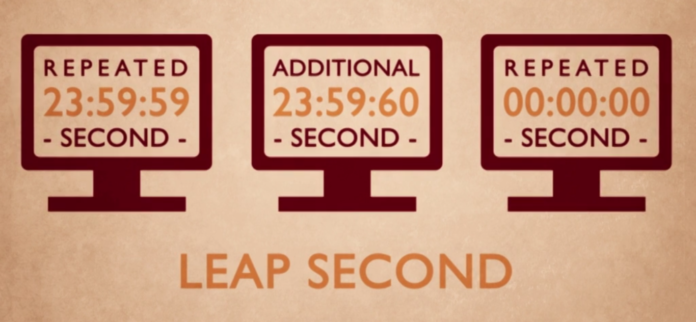To wish the coming of 2017, one needs to wait for an extra second as this year begins with a leap second. A leap second is a one-second adjustment that is applied to UTC in order to maintain its time of day, close to mean solar time. This leap second occurs as a result of the change in the rate of rotation of Earth.

The Earth’s rotation speed varies in response to climatic and geological events. This is mainly attributed to the tidal friction, which alone lengthens a day by 2.3 ms/century. While, the movement of Earth’s crust, changes in mantle convection and other changes contribute to some extent. These changes are unpredictable and their effect on the rotation is not well defined.
Due to this, the leap seconds are irregularly spaced and unpredictable. Each and every time, insertion of it is decided six months prior, by the International Earth Rotation and Reference Systems Service.This is done in order to ensure that the difference between UTC and mean solar time never exceeds 0.9 seconds. So far, 26 leap seconds have been inserted. Last time, the leap second was inserted on June 30, 2015.

This time, the new year will begin after this leap second. Specifically, a positive leap second will be inserted on December 31, 2016. This second will be inserted between 23:59:59, December 31, 2016, and 00:00:00, January 1, 2017. This extra second will be displayed on UTC clocks as 23:59:60 on the last night of 2016.
NASA missions, including the Solar Dynamics Observatory which watches the Sun, will join the world to add the leap second, just before the clock marks the midnight of the New Year’s Eve.
NASA said, it would do this to keep in sync with Earth’s rotation, which gradually slows down over time. In space, millisecond accuracy is crucial to understanding how satellites orbit.

Dean Pesnell, the project scientist for SDO, said, “SDO moves about 1.9 miles every second. So does every. So does every other object in orbit near SDO”. Sitting at Goddard Space Flight Center, Greenbelt, Maryland, the scientist waits eagerly for the new year to begin. He adds, “We all have to use the same time to make sure our collision avoidance programs are accurate.”
With several goals and success marks to be reached, the year of 2017 is all set to begin after a second’s delay. The world waits for the New Year to begin at 23:59:60 UTC.



























